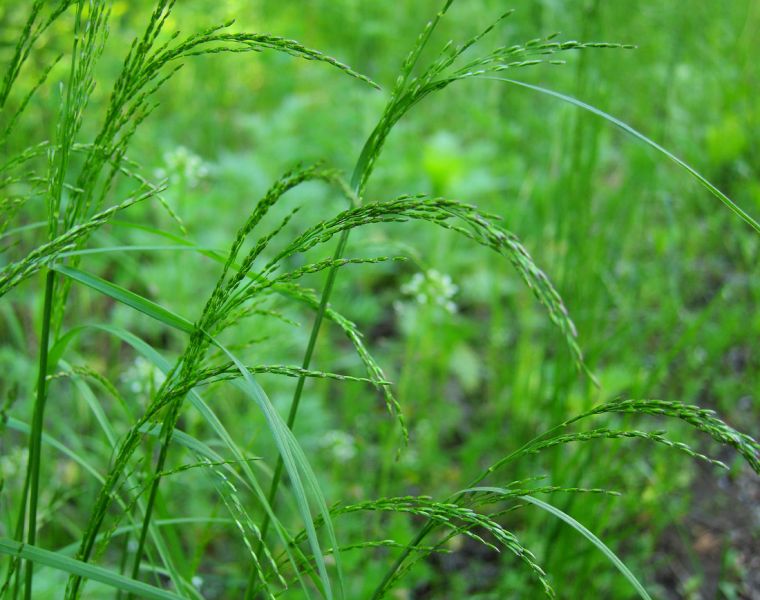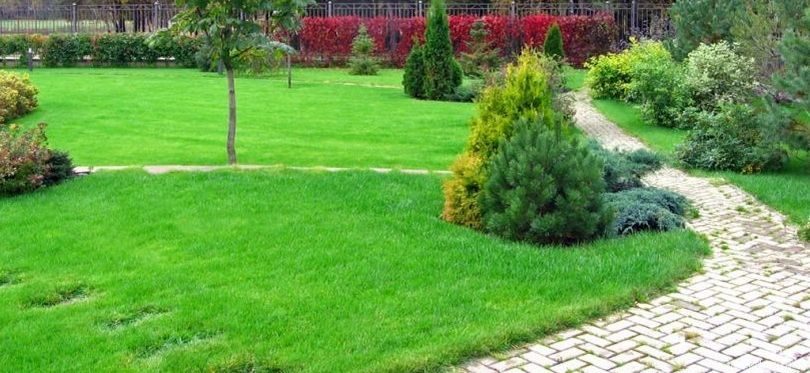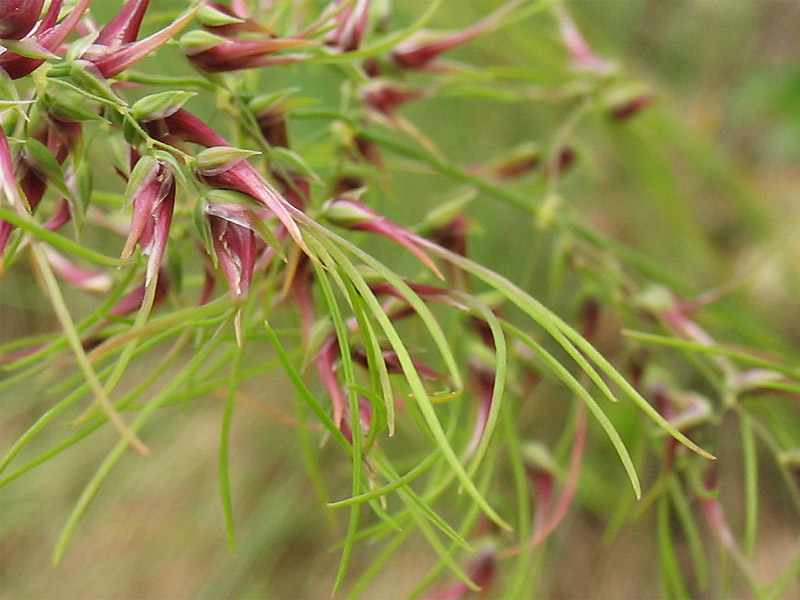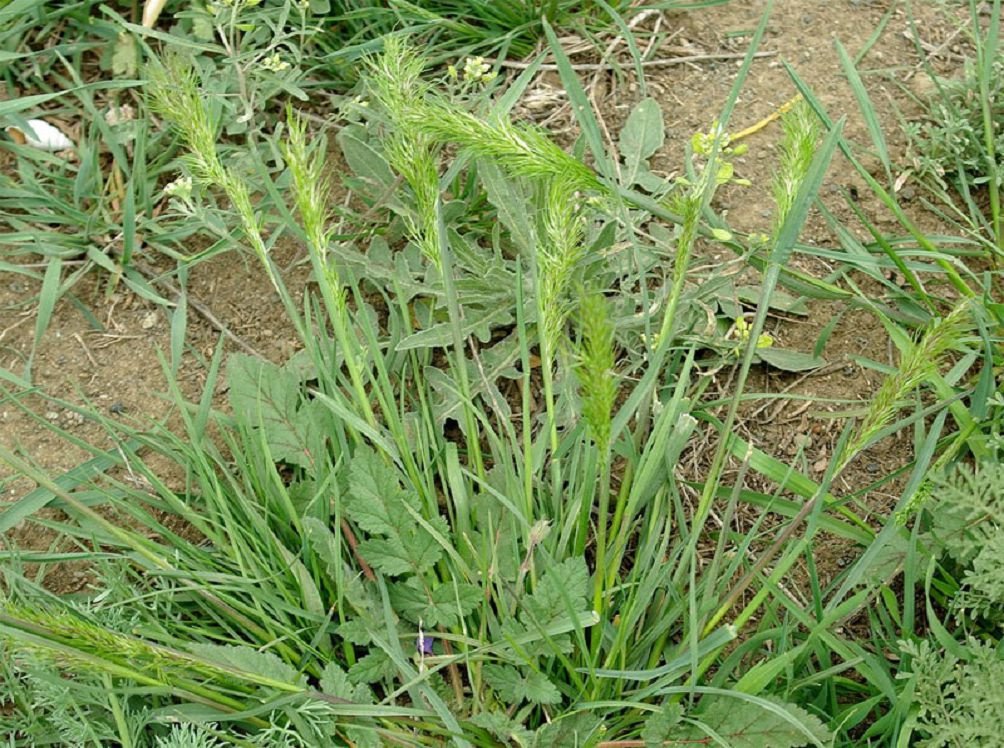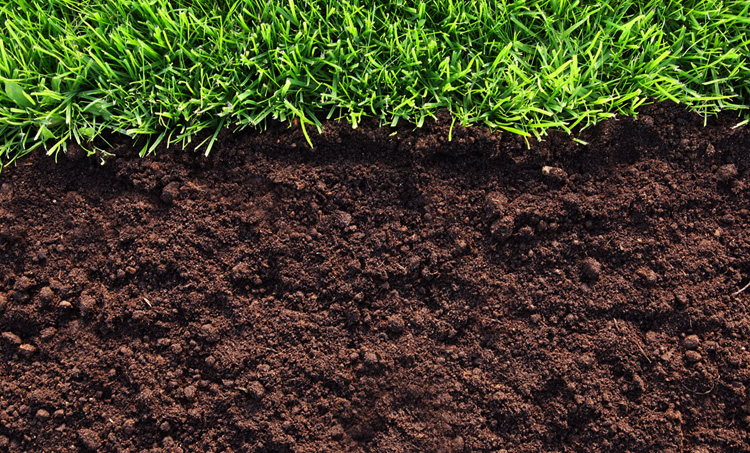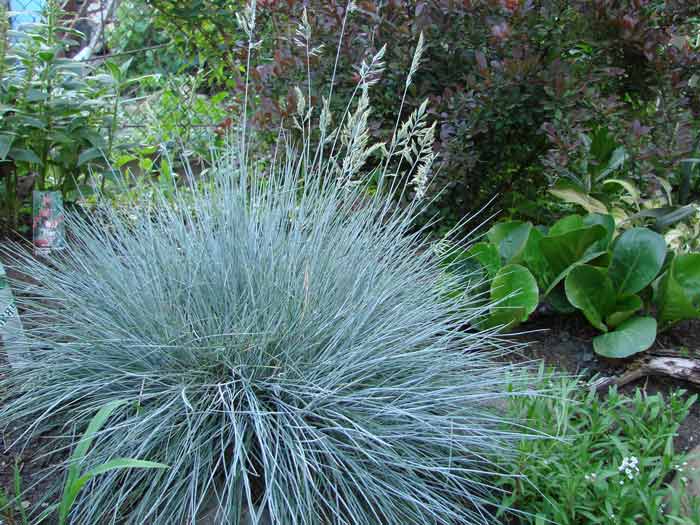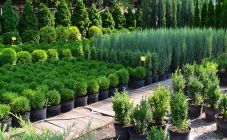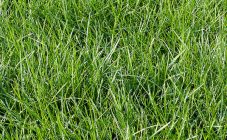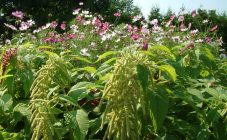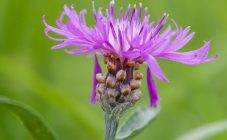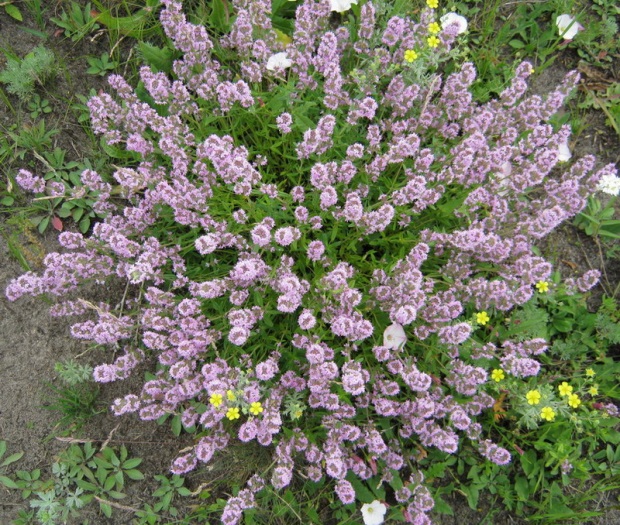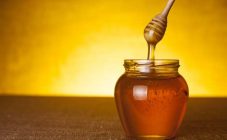Content:
Meadow bluegrass is the best option for sowing on lawns. The culture forms a dense green carpet that is pleasing to the eye. Its cultivation is associated with certain agrotechnical requirements. You need to know what bluegrass is and how it is properly cultivated.
Short description
Bluegrass is considered one of the main genera of the cereal family. It is a collection of herbaceous plants, mainly perennials. The culture is widespread throughout the planet, especially in the mountainous tropics. Its importance is especially important in the steppe regions, where bluegrass plays a major role in the formation of the phytocenosis.
Plants vary in height from 10 cm to one and a half meters. In some cases, they form underground creeping shoots, and in their absence, they form dense wood. Stems are most often straight, smoothed and bare, in some cases there is roughness.
The blades are usually linear, folded or flattened. Their width usually does not exceed 1.2 cm. As a rule, the foliage is either bare, or there are dissected short hairs on it.
According to the botanical description, the bluegrass inflorescence is a panicle, in most cases broadly spreading, in some cases compressed and thickened. The length of the panicle varies from 1.5 to 30 cm. The length of the seed is usually 1.3-3 mm, it has an oblong or ellipsoidal shape. Its ventral side is most often flat, as a result of which the weevil becomes similar to a trihedron.
Significance and application of bluegrass
Lawn grass bluegrass is one of the most widespread in the world. Among this culture, bluegrass Lugovoy or Lesnoy bluegrass are most suitable for lawns. The culture has acquired particular importance in agriculture as a pasture or hay crop for livestock feed. The most important from this point of view is Meadow bluegrass - the most cultivated variety of grass.
Swamp and Common bluegrass, as well as Creeping bluegrass, are also widespread everywhere. In the southern regions, priority in this regard was given to the bulbous bluegrass and some species closely related to it. In the pasture steppe regions of Southern Siberia and Kazakhstan, bluegrass and bluegrass are widely cultivated. For pastures located in the highlands, of particular importance are:
- bluegrass long-leaved;
- Alpine bluegrass;
- bluegrass bluegrass, etc.
The annual bluegrass is ubiquitous. The lawn is often sown with it. However, at the same time, the crop is considered an intractable weed of grain crops and vegetable gardens, as well as parks and gardens.
Types and varieties of bluegrass
More than 500 species of this herb are found in nature. A significant part of them are cultivated as cultivated plants for sowing lawns. Among them, the Lugovoy bluegrass is the most common.
Bluegrass Meadow: description of the plant
Plants with a powerful branched root system, forming one stem each.
Numerous lateral processes grow from the root, as a result of which a large layer of loosened turf develops.
Stems are soft, rounded, varying in height from 20 to 100 cm. Loose ear, made in a pyramidal shape.
The leaves are narrowed, linear, have a bluish-greenish color. Their width is from 1.5 to 4 mm.
Plants bloom in the first half of summer.
The culture is widespread in the wild in forest glades, low-lying moist soils and the coasts of fresh water bodies.
Annual bluegrass
The plant is cultivated as an annual or biennial.
Stems lodging, soft, 5-35 cm high. The foliage is narrowed and enveloping, grows from the stem base, varies in width within 0.5-4 mm.
Inflorescence - panicle, loose, up to 6 cm in height, formed from a small number of spikelets. Some ears are abundantly covered with dense oblong pubescence and tough elastic bristles.
Flowering begins in May and usually lasts until early fall. It grows mainly on pebble and sandy soils on roadsides.
Bulbous bluegrass
A cereal culture of 10-30 cm in height, characterized by powerful loosened sod. At ground level, a thickened rosette of shortened foliage with a rich green color is formed, 1-2 mm wide.
Stems are bare, on their tops there are dense panicle inflorescences, reaching 7 cm in height. On the shortened, rough shoots, spikelets are located, which have transformed into bulbs that have the ability to root. The color of the ears is purple or green.
Marsh bluegrass
The plant is usually found on wet forest edges. It has lodging or erect stems, the height of which varies from 15 to 80 cm.
The leaves are narrowed, gray-greenish, 2-3 mm wide, grouped in the region of the stem base. On the upper part of the shoots there are spreading panicle inflorescences up to 20 cm in length. The ears are abundantly covered with shortened hairs. Flowering begins in May.
Angustifolia bluegrass
Outwardly, the plant is almost indistinguishable from meadow bluegrass, but it stands out with tough linear leaves, the width of which reaches 1-2 mm.
Shoots are covered with small thorns, the top of which is crowned with a paniculate inflorescence.
The variety is characterized by increased drought resistance, which determines its prevalence in steppe regions and on dried meadows.
Common bluegrass
Perennial, the height of the stem of which varies from 20 to 120 cm.
The plant has a single erect stem and a short root system. The leaves have a grayish or deep green color, their width is 2-6 mm.
Flowering begins in the first half of summer. During this period, a spreading pyramidal panicle inflorescence is formed at the top of the stem, the length of which varies from 6 to 20 cm. Spikelets are protected by dense and sinewy scales, which, in turn, are densely covered with small thorns.
Plants grow in wet meadows and on the banks of water bodies, where the soil is saturated with humus.
Steppe bluegrass
The height of the stems is 15-50 cm each. Plants form several densely leafy stems, which, when grown, form a powerful sod.
The foliage is 1-2 mm wide, located along the vertical stem axis and abundantly covered with relief veins.
The inflorescence is a cylindrical panicle, the length is most often no more than 10 cm. It is formed by the fusion of yellow-greenish spikelets and small twigs.
Flowering occurs in June.
Varietal variety
Breeding for the creation of new crop varieties is carried out mainly among the Lugovoy bluegrass. Certain successes have been achieved here.
The most common and popular varieties are:
- Collected;
- Blackberry;
- Dolphin;
- Midnight;
- Connie;
- Balin;
- Geronimo;
- Platini;
- Compact, etc.
Growing as lawn grass
Seed check
Before planting seeds, it is recommended to test them for germination. To do this, dissolve 20 g of salt in a half-liter container with water and, after mixing, add seeds there, leaving there for 5-10 minutes.
Good bluegrass seeds will fall to the bottom, while poor quality ones will float to the surface.
It is also allowed to hold the seeds in boiling water, and then place them in sawdust and place them in an insulated room. Good quality seeds will start sprouting soon.
Soil preparation
Competently built soil preparation will contribute to the fact that the bluegrass will subsequently visually level the ground. The plant reacts negatively to excessive soil salinity. Slightly acidic loams are optimal for it. The site should also be well lit by the rays of the sun.
The earth is pre-dug up, removing all weeds and rhizomes. If the fertile layer is less than 15 cm, then a little sand should be added. The plot is carefully leveled with a glanders or a rake, and then the soil is tamped with a special roller or a wooden board. After that, the soil mixture is again loosened with a rake, this time to a depth of 2 cm. There should not be any depressions or lumps on the surface of the soil.
An overgrown bluegrass can shade other plants. Therefore, it must be surrounded by powerful cultures that cannot be harmed.
Sowing is most often carried out in the second half of summer, that is, growing bluegrass as a winter crop. Manual seeding is still widely practiced, but a more efficient and simpler method involves using a dedicated lawn seeder. The seeds are deepened into the soil by about 2 mm. When sowing, you should observe the seeding rate and apply the seed in moderation - 40 g of seeds should be evenly distributed on each square meter, and some of them should be planted across the lawn.
With a well-carried out sowing, seedlings are formed above the soil surface after one to one and a half weeks. It should be noted that bluegrass grows extremely slowly (especially in a year after planting) and full-fledged plantings are formed only in the 2-3rd year.
Watering and feeding
Bluegrass is a plant, most of the roots of which are located in the upper soil layer, but some rhizomes penetrate the soil quite deeply. This circumstance allows the plant to independently provide itself with moisture. However, without irrigation during dry periods, the plant risks dying. To prevent this from happening, during a drought, plantings should be irrigated.
Top dressing in the form of organic fertilizers is applied after the first and last lawn mowing. Substances are evenly distributed over the surface of the lawn. Subsequently, they will penetrate deep into the soil with the help of melt water and rain.
Haircut and preparation for winter
Mowing helps to compact the lawn. The procedure does not cause problems for the plants. However, too strong a haircut is not welcome, the optimal height level is 4 cm.
Bluegrass is a plant that is characterized by increased winter hardiness. At the onset of winter, its grass cover remains the same, that is, the lawn leaves in winter in a green state. In this regard, the plantings do not need additional shelter.
Diseases and pests
Most often bluegrass is affected by powdery mildew and rust. In the first case, it is required to limit watering and nitrogen fertilization, and also to use an appropriate fungicide.
The fight against powdery mildew involves:
- low mowing of the lawn every three days with the obligatory removal of the mowed raw materials;
- low concentration nitrogen fertilization;
- use of fungicides.
Bluegrass is usually attacked by moles or mice. These animals damage the root system of plants and spoil the appearance of the lawn. To destroy them, poison is used, and for prevention, special repellents are used.
Bluegrass or fescue
Most often, either bluegrass or red fescue is used as lawn grass. The last option is simpler, since fescue, even in the absence of proper care, is able to grow normally and show its decorative properties. Bluegrass, on the other hand, requires increased attention, especially in the first years of life. However, at the same time, it is outwardly more attractive and beautiful in comparison with fescue. It begins to turn green before all lawn grasses and retains this state until winter.
Bluegrass grows well in sunny areas, while in the shade it is strongly affected by powdery mildew. Fescue, on the other hand, thrives in shady conditions. At the same time, the best option is to cultivate both herbs together. This allows you to get beautiful lawns and more fully use the hidden potential of various weather and climatic conditions of the growing season.
Growing bluegrass does not require significant economic and time costs. If the minimum requirements for agricultural technology are met, you can get good plantings on the lawn that will look good.

